Sorted by date Results 76 - 100 of 135
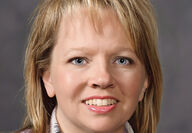
We are happy to share the fact that 2018 marked the beginning of our 75th year of partnerships with Minnesota's great publicly owned airports! We have 135 quality, public use airports and 15 public seaplane bases that serve the Minnesota aviation community and their local communities in a very positive way. Through this partnership with the airports we work together to help assure we have a group of safe and well-maintained airports. This happens by meeting with airport boards, commissions,... Full story
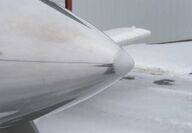
How much can frost affect your plane? According to the NTSB: • Frost the size of a grain of salt, distributed as sparsely as one per square centimeter over a wing's surface, can destroy enough lift to prevent your plane from taking off. • Frost can reduce your wing's max lift by 30 percent or more. • It can also reduce the margin of your wing's critical angle-of-attack by several degrees. • Because frost disrupts airflow over your entire aircraft, it can increase drag by up to 40%. The Federal... Full story
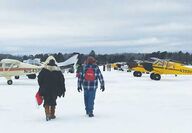
Flying in winter can literally be a breath-taking experience. From the air, the vistas of snow covered open land punctuated by the green of pine forests, can be awe inspiring in its simplicity and breathtaking as it stretches to a seemingly endless horizon. Another breath-taking moment of winter is when you walk out of the warmth and comfort of your favorite FBO's flight ops office and step onto a frozen, wind-swept, mostly white expanse of tarmac. Even though it was previously in a heated... Full story
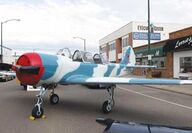
Tourism is a valuable source of revenue for many "mom & pop" shops in many communities throughout the state and nation. From a more local viewpoint, tourism can be a significant source of tax revenues for the cities and counties, as well as the state. An example of tourisms important financial contributions are discussed in an article by Roger Dow, president and CEO of the U.S. Travel Association, written for the publication, Route Fifty. In that article he says, "States that invest in promoting... Full story

Every pilot, and likely most people who have anything to do with the flying side of aviation, know that frequency 121.500 MHz (VHF) is dedicated to emergencies and distress calls specifically. It couldn't be more clearly stated than that. But apparently enough folks have been misusing 121.500 for general conversation and other non-appropriate chatter, causing the Federal Communications Commission (FCC) to issue an FCC Enforcement Advisory (EA). It was the first FCC issued EA for 2017. The... Full story
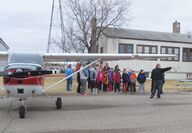
In a recent Aeronautics Technical Bulletin article by this author titled; More than 637,000 new opportunities, I said 'there are 637,000 + opportunities for experienced pilots, technicians, or anyone in aviation to talk to young people about the opportunities before them in GA and beyond. You can show them (new potential aviators) what you do in and for aviation. Excite them about the many possibilities and opportunities that are coming available. Help them make a choice, and then be a mentor... Full story

Have you ever attended a "needs meeting" for your airport? Nearly two thirds of Minnesota's publicly owned airports have completed their needs meetings for this first cycle. What is a Needs Meeting you might ask? Well, many people know what a Capital Improvement Program (CIP) is, but in case you aren't sure, a CIP is used to plan and program the projects that will preserve and develop Minnesota's system of publicly-owned airports. Airport Needs Meetings are a larger, more detailed conversation... Full story
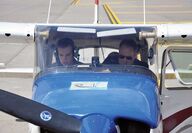
What can be more beautiful than a flight at noon on a day where the winds are three knots or less. The temperature is a steady 72 degrees. Visibility is unlimited and the skies are perfectly clear. The thought might come to mind, for most pilots that today is a good day to just enjoy the "severe clear" conditions and go flying for the beauty and fun of it. But is there anything that would make it even more fun? Perhaps a "$100" hamburger, or a chance to check out a new piece of property you are... Full story
A safe pilot will always be aware of his/her personal condition, skills, and attitudes prior to climbing into the cockpit. But that awareness doesn’t stop there. In fact if you take a look at FAR 91.103, Preflight action, you’ll see that every pilot in command is required to be fully familiar with all available information about their intended flight. This includes alternate airports with appropriate runway length for your aircraft, and the weather expected at those alternates along your planned route of flight. For your convenience, FAR sec 91... Full story
The primary job of every pilot from takeoff to touchdown is to fly the plane. One of the most important efforts prior to that is for the pilot to inspect the aircraft thoroughly to help ensure the aircraft is indeed safe and ready for flying. But is there anything before that, which is just as important? Yes! Inspect yourself. Ask yourself if in fact, you are truly ready to fly. You are the expert about what is going on inside you and in your life. You have the most current, and accurate information about how you feel, what may be a bit... Full story
• General Aviation has a $12.2 billion impact on the State of Minnesota through its network of 135 public airports. • General Aviation has created 164,900 jobs in Minnesota, and provides more than $6.5billion in labor income annually. • General Aviation contributes more than $150 billion to the U.S. economy annually and employs more than 1,265,000 people, nationally. • In the U.S., General Aviation aircraft fly almost 24 million hours and carry 166 million passengers annually. • There are nearly 4,000 paved General Aviation airports open to t... Full story

Your office of Aeronautics is a strong supporter of four specific disciplines — science, technology, engineering and mathematics (STEM) in our schools. These areas of study and mastery are vitally important to the aviation industry and its future. That is why it is so important that we help our schools with guiding our youth toward involvement in STEM programs. No doubt you have heard about the pilot shortage in the US and in fact, globally. But did you know there is also a forecasted s... Full story

Of all the seasons experienced in the upper Midwest, fall is certainly one of the most visually spectacular, especially from the air. Great vistas of bright red, orange and golden hues can be seen as leaves turn colors while the trees prepare for winter. Only from above is it possible to truly see the carpet of varying colors and the many shimmering lakes throughout the landscape. Even with all the delights for the visual senses, we must not forget to be alert for other aircraft in the air. We... Full story
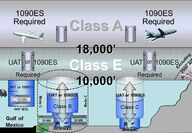
On January 1, 2020, the Federal Regulations 14 CFR§ 91.225 and 14 CFR § 91.227 go into effect, requiring any aircraft that flies in controlled airspace to have operating Automatic Dependent Surveillance – Broadcast (ADS-B) equipment on board. What is ADS-B? Basically, ADS-B is a precise, satellite-based system that uses GPS (via ADS-B Out) to quickly determine an aircrafts' airspeed and location (and additional data), then transmits that information to the ground station network, which, in tur... Full story
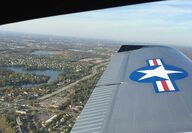
One of the best parts of living in the Midwest is the opportunity to live in an area where "community" is important to most people, and neighbors are folks you actually know! Another version of "community" is the one that exists in the world of aviation. Think for a moment about how often you run into someone you know at an airport or at an aviation function. Remember when you met someone who is friends with someone you know, and who is your friend as well! Now that's community! If you attend an... Full story

Are you my customer? Do you know the products MnDOT Aeronautics provides? If you fly, and/or land in Minnesota, you are using some of our products for sure. MnDOT as a whole is working "to earn trust and increase transparency through a customer-centered organization in which we engage customers, listen to understand, and balance the diverse needs of all to achieve the best possible outcomes". At Aeronautics, we're learning the Customer Centered Culture (C3) principals and applying them to our... Full story
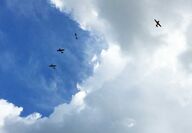
Thunderstoms need three things: • Moisture to form clouds and rain. • Unstable Air-relatively warm air that can rise rapidly. • Lift-fronts, sea breezes and mountains are capable of lifting air to help form thunderstorms. Surface dew point and temperature are a good indicator of storm severity. Thunderstorms forming over an area where the dew point is 50 F or higher with more than a 30 degree spread between temperature and dew point indicate a potential for extremely strong storms. Thund... Full story
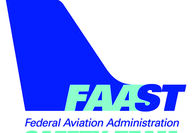
Runway incursions are an increasingly more frequent issue that can catch an airman in a situation where they don't want to be. Out of roughly 80,000 daily operations in the National Airspace System, we are seeing an average of three runway incursions per day! We have ever increasingly complex airspace, increasing traffic volume, and ATC is at a 28 year staffing low with a great deal of training being conducted. All these are factors can meet and get the unprepared pilot in a bad situation.... Full story
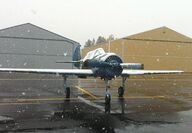
Every aviator who has taken the winter off from flying is now feeling a great excitement to get back into the air. The urge to fly is strong as the renewal of life pushes bright green chutes up through leftover piles of snow, or quickly expanding buds on bushes and tree branches rejuvenates our spirits. Spring is beautiful but its weather is at best, fickle. One may be brushing snow off aircraft wings and windscreens one day, and adjusting flight plans and alternates to avoid towering... Full story

Each spring millions of birds make their way back to and through Minnesota along the Mississippi flyway, on their way to prime nesting grounds. It is also the time when pilots who do not enjoy the cold of winter begin to feel those deep-seated urges to take flight as the days get longer and warmer. It is also the time of year when all pilots must remember they share the skies with birds of a variety of sizes and weights. It is a time that requires pilots' extra vigilance, preparedness and action... Full story
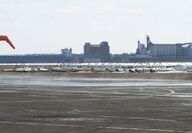
A departing or landing aircraft can experience a condition called hydroplaning when there is moisture on the runway. The moisture can be rain, slush, ice, snow or a combination of moisture types in a thin layer on the runway surface. Simply stated, hydroplaning is an event that occurs when the brakes are applied on landing for example, and the wheels lock, causing the tires to skid on top of the moisture surface, somewhat like water skiing. When taking off, the wheel and tire will initially... Full story
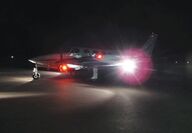
After a warm, bright, sunny day, the still, cool air of the evening sky and the rising moon call you to take flight. For many, night flying is intimidating. Yet, to others, it is a challenge they willingly accept. Their reward is seeing the amazing beauty of villages and towns twinkling in the ocean of blackness below them and the moonlight shimmering on the lakes in a golden champagne color. Good night vision is a key to overcoming those challenges and enjoying night flight. It is much easier... Full story

Spring arrived early this year with many events attracting attention. As aviators, we flock to airshows, fly-ins, and pancake breakfasts to enjoy bright, blue spring and summer skies with friends and family. I'll be at many aviation events and programs around the state this year, too, along with other Aeronautics staff. Feel free to invite us to any event you'd like us to attend at your airport. We'll do our best to be there. We look forward to meeting you face to face to hear your questions,... Full story
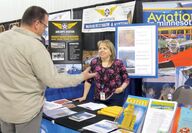
Aviation as a whole is global in reach and scope, yet it maintains a feel of a tight-knit family. How often have you experienced, or overheard someone say they ran into someone they know at some out-of-the-way airport or destination who is in aviation? What are the chances for an encounter like that? In the community of aviation it is a frequent occurrence for many. That is one part of aviation that is always fun! That begs the question, what are we as aviation individuals, as well as aviation...
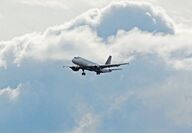
Boeing forecasts that between 2016 and 2035, the world's commercial aviation industry will require approximately: • 617,000 new commercial airline pilots • 679,000 new commercial airline maintenance technicians • 814,000 new cabin crew The 2016 outlook shows a growth of 10.5 percent for pilots over the 2015 outlook and 11.3 percent for maintenance technicians. New pilot demand is primarily driven by new airplane deliveries and fleet mix, while new technician demand is primarily driven by fleet...